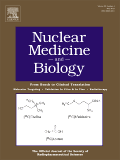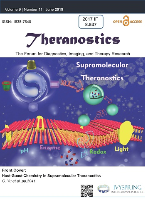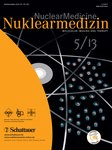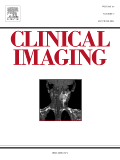
NUCLEAR MEDICINE AND BIOLOGY
Scope & Guideline
Elevating standards in nuclear medicine and biological research.
Introduction
Aims and Scopes
- Development of Radiopharmaceuticals:
The journal emphasizes research on the synthesis, optimization, and characterization of radiopharmaceuticals, including novel agents for imaging and therapy. - Molecular Imaging Techniques:
There is a strong focus on the advancement of imaging modalities such as PET, SPECT, and hybrid imaging techniques, which are critical for diagnosing and monitoring diseases. - Theranostics:
The integration of diagnostic and therapeutic applications, particularly in the context of targeted radiotherapy and personalized medicine, is a core area of exploration. - Radiochemistry Innovations:
Research that explores new radiochemical methodologies, including novel labeling techniques and automation of synthesis processes, is a significant aspect of the journal. - Preclinical and Clinical Applications:
The journal publishes studies that bridge the gap between laboratory research and clinical applications, showcasing the translational potential of nuclear medicine. - Biomarker Development:
The identification and evaluation of biomarkers for various diseases, particularly cancer, through imaging and radiolabeled compounds are highlighted.
Trending and Emerging
- Targeted Alpha Therapy (TAT):
There is a growing interest in targeted alpha therapy, reflecting advancements in the understanding of radiobiology and the therapeutic potential of alpha-emitting isotopes for cancer treatment. - Artificial Intelligence in Imaging:
The integration of artificial intelligence and machine learning techniques in imaging analysis and radiopharmaceutical development is rapidly emerging as a key focus area. - Bioconjugation Techniques:
Research on bioconjugation strategies for enhancing the delivery and efficacy of radiopharmaceuticals is trending, particularly in the context of antibody-drug conjugates. - Immuno-PET Imaging:
The application of PET imaging with immunoconjugates for monitoring immune responses and cancer therapies is increasingly prominent, reflecting the growing field of immuno-oncology. - Nanoparticle-based Imaging and Therapy:
The use of nanoparticles for targeted imaging and therapy is gaining traction, with studies focusing on their unique properties for enhancing drug delivery and imaging sensitivity. - Radioligand Development for CNS Disorders:
There is an emerging trend in developing radioligands specifically for imaging central nervous system disorders, reflecting the need for better diagnostic tools in neurology.
Declining or Waning
- Traditional Radiopharmaceuticals:
There is a noticeable decline in studies focused on traditional radiopharmaceuticals, as newer, more targeted agents and approaches gain popularity. - Non-targeted Imaging Approaches:
Research on non-targeted imaging methods appears to be waning, as the field increasingly emphasizes precision medicine and targeted imaging agents. - Basic Radiochemistry:
Papers focusing exclusively on basic radiochemistry without applications in imaging or therapy are becoming less frequent, reflecting a trend towards more applied research. - Conventional SPECT Imaging:
The prevalence of conventional SPECT imaging studies has decreased, possibly due to the increasing adoption of PET and hybrid imaging techniques that offer higher sensitivity and resolution. - Invasive Procedures in Imaging:
Research involving invasive imaging procedures has diminished as the focus shifts towards less invasive and more patient-friendly imaging technologies.
Similar Journals

Hong Kong Journal of Radiology
Pioneering Research for a Healthier TomorrowHong Kong Journal of Radiology, an esteemed publication of the Hong Kong Academy of Medicine Press, serves as a vital platform for disseminating innovative research in the field of radiology, nuclear medicine, and imaging. Established in 2011 and operating under an Open Access model since 2018, this journal not only promotes the sharing of knowledge but also enhances global accessibility to cutting-edge studies. With its ISSN 2223-6619 and E-ISSN 2307-4620, the journal strives to engage a diverse audience ranging from experienced professionals to aspiring scholars in the medical imaging domain. Despite its current ranking in the Q4 quartile of the Scopus category for radiology, the journal is committed to improving its standing by featuring high-quality research that addresses pressing issues in the field. The journal's convergence from 2011 to 2024 reflects its ongoing dedication to fostering academic excellence and encouraging collaborative discourse among researchers and practitioners globally. Located in Hong Kong, the journal plays a significant role in shaping the future of radiology education and practice in China and beyond.

Theranostics
Transforming Therapeutics through Collaborative Research.Theranostics is a premier journal in the field of Medicine and Pharmacology, published by IVYSPRING INT PUBL. With its commitment to open access since 2011, it facilitates the widespread dissemination of innovative research, fostering collaboration and advancements in therapeutic diagnostics. The journal proudly holds a Q1 ranking in both Medicine (Miscellaneous) and Pharmacology, Toxicology and Pharmaceutics, as of 2023, showcasing its esteemed position within the scientific community. Recognized globally, it ranks in the top 1%, with Scopus rankings placing it as 4th out of 398 in Medicine and 1st out of 43 in Pharmacology. Theranostics serves as a crucial platform for researchers, professionals, and students to explore cutting-edge developments as it converges multidisciplinary approaches to enhance patient care and treatment efficacy. With a focus on bridging experimental research and clinical applications, the journal is instrumental in shaping future therapies and diagnostic strategies.

NUKLEARMEDIZIN-NUCLEAR MEDICINE
Transforming Healthcare through Nuclear Medicine Discoveries.NUKLEARMEDIZIN-NUCLEAR MEDICINE is a prestigious journal published by Georg Thieme Verlag KG, focusing on pivotal advancements in the fields of Nuclear Medicine, Radiology, and Imaging. Established in 1959, this journal has served as a critical platform for disseminating innovative research, reviews, and clinical guidelines until its anticipated convergence in 2024. With an ISSN of 0029-5566 and an E-ISSN of 2567-6407, NUKLEARMEDIZIN is acknowledged in the academic community as a Q3 category journal within Medicine (miscellaneous) and Radiology, Nuclear Medicine, and Imaging as of 2023, highlighting its ongoing contribution to the interdisciplinary dialogue in healthcare. Although the journal does not currently offer open access, it remains accessible to professionals and students through various academic databases, ensuring that cutting-edge knowledge in this growing field is shared widely. Researchers interested in the latest methods and technologies in Nuclear Medicine will find NUKLEARMEDIZIN a valuable resource for enhancing their work and understanding the complexities of modern imaging modalities.

SEMINARS IN NUCLEAR MEDICINE
Advancing knowledge in nuclear medicine.Welcome to Seminars in Nuclear Medicine, a prestigious journal published by W B Saunders Co-Elsevier Inc that has been at the forefront of the field since its inception in 1971. This journal serves as a dedicated forum for researchers, healthcare professionals, and students specializing in the rapidly evolving areas of radiology and nuclear medicine. With an impressive ranking of #29 out of 333 in the Scopus category, drawing an esteemed 91st percentile, it holds a distinguished Q1 category status, highlighting its critical role in disseminating high-quality research and clinical practices. Although it does not operate as an Open Access publication, Seminars in Nuclear Medicine remains a vital resource, featuring comprehensive reviews and insightful articles that inform the medical community about the latest advancements and applications within nuclear imaging. This journal not only enhances knowledge but also encourages collaboration among professionals dedicated to improving patient outcomes through innovative nuclear medicine techniques.

Molecular Imaging
Unveiling the Secrets of Molecular Structures.Molecular Imaging is a prominent journal published by SAGE Publications Inc., which serves as a vital platform for the dissemination of high-quality research in the field of molecular imaging. With an E-ISSN of 1536-0121, this journal has established itself within several key areas, including Biomedical Engineering, Biotechnology, Condensed Matter Physics, Molecular Medicine, and Radiology, Nuclear Medicine and Imaging. Spanning from 2002 to 2024 and currently classified within the prestigious Q2 and Q3 quartiles, Molecular Imaging aims to highlight the latest developments and innovative methodologies in molecular imaging techniques and applications. Researchers from diverse backgrounds will find the journal's content valuable for staying updated with recent advancements, evidenced by its competitive Scopus ranking and a commitment to fostering interdisciplinary collaboration. Although the journal is not open access, the rigorous peer-review process ensures that all published articles provide significant contributions to the field, making it an essential resource for professionals, researchers, and students alike.

MOLECULAR IMAGING AND BIOLOGY
Advancing Knowledge in Cancer Research and ImagingWelcome to MOLECULAR IMAGING AND BIOLOGY, an esteemed journal published by SPRINGER that delves into the rapidly advancing fields of molecular imaging and its applications in biology, with a strong emphasis on cancer research, oncology, and radiology. With ISSN 1536-1632 and E-ISSN 1860-2002, this journal has established itself as a prominent platform for disseminating insightful research and innovative methodologies since its inception in 2002. As of 2023, it holds commendable rankings in notable categories—Q3 in Cancer Research, Q2 in Oncology, and Q2 in Radiology, Nuclear Medicine, and Imaging—illustrating its impact and relevance in these disciplines. Furthermore, with impressive Scopus rankings placing it in the top quartile of journals within its categories, it serves as an essential resource for researchers, professionals, and students seeking to stay informed about the latest developments in molecular imaging technologies and biological applications. While currently not an Open Access journal, the rigorous peer-review process ensures high-quality and impactful contributions to the field, making it a valuable addition to any academic library.

Clinical Imaging
Advancing the Future of Diagnostic ImagingClinical Imaging, published by Elsevier Science Inc, is a renowned journal dedicated to the field of radiology, nuclear medicine, and imaging. With an ISSN of 0899-7071 and an E-ISSN of 1873-4499, this esteemed publication has established its significance in advancing imaging science since its inception in 1989 and continues to make impactful contributions to the discipline through 2024. The journal holds a prestigious Q2 ranking in the category of Radiology, Nuclear Medicine, and Imaging, reflecting its critical role in bridging research and clinical practice. Currently ranked #113 out of 333 by Scopus, with a notable 66th percentile, it offers a platform for disseminating high-quality research, reviews, and case studies that inspire innovation and enhance imaging techniques. Although it primarily functions as a subscription-based journal, it remains dedicated to accessibility and the dissemination of pivotal findings that inform both academia and clinical settings. Clinical Imaging is essential for researchers, professionals, and students alike, offering insights that shape the future of diagnostic imaging.

QUARTERLY JOURNAL OF NUCLEAR MEDICINE AND MOLECULAR IMAGING
Illuminating the Pathway to Advanced Imaging Solutions.The Quarterly Journal of Nuclear Medicine and Molecular Imaging, published by Edizioni Minerva Medica in Italy, serves as a pivotal platform for researchers and practitioners in the fields of Nuclear Medicine and Molecular Imaging. With an ISSN of 1824-4785 and an E-ISSN of 1827-1936, this journal boasts a respectable impact factor and is positioned in the Q3 quartile of the Radiology, Nuclear Medicine and Imaging category, based on the latest 2023 evaluations. As the journal continues to converge from its inception in 2004 to its anticipated expansions through 2024, it aims to disseminate high-quality, peer-reviewed articles that advance the frontier of imaging technologies and their applications in clinical practice. Researchers, professionals, and students are encouraged to contribute to its diverse scope, which encompasses innovative research, clinical findings, and reviews that encapsulate cutting-edge advancements in the field, highlighting its importance as an essential resource for knowledge and collaboration.

EUROPEAN JOURNAL OF NUCLEAR MEDICINE AND MOLECULAR IMAGING
Illuminating the Path of Molecular Imaging DiscoveriesThe European Journal of Nuclear Medicine and Molecular Imaging is a prestigious, peer-reviewed journal published by Springer, dedicated to advancing the field of nuclear medicine and molecular imaging. With an impressive impact factor and ranked in the Q1 category for both Medicine and Radiology, Nuclear Medicine and Imaging, this journal is a pivotal platform for researchers and practitioners to disseminate significant findings from 1996 to the present, reflecting the evolution of the field. The journal boasts a notable Scopus rank, standing at #8 out of 333 in its category, placing it in the top 3% of published works, which highlights its critical importance in shaping contemporary practices and research innovations. Although it does not offer an open-access model, the journal provides various access options to ensure that important research is accessible to professionals, students, and academics alike. Through rigorous peer review and a commitment to high-quality publication, the European Journal of Nuclear Medicine and Molecular Imaging plays an essential role in the advancement of nuclear medicine, contributing to better diagnostic and therapeutic outcomes globally.

ANNALS OF NUCLEAR MEDICINE
Advancing the Frontiers of Nuclear MedicineANNALS OF NUCLEAR MEDICINE is a prominent academic journal dedicated to the field of nuclear medicine, published by Springer. With a rich publication history dating back to 1987 and continuing through 2024, this journal serves as a vital resource for researchers and practitioners interested in the latest developments in nuclear imaging, radiopharmaceuticals, and therapeutic applications. Ranked in the second quartile (Q2) for both Medicine (miscellaneous) and Radiology, Nuclear Medicine, and Imaging categories in 2023, it maintains a strong position in the academic community, with an impressive Scopus rank of #104 out of 333 in its field, placing it in the 68th percentile. The journal is not open access but offers a range of access options through institutional or individual subscriptions, ensuring that critical research findings reach a wide audience. By fostering high-quality, peer-reviewed articles, ANNALS OF NUCLEAR MEDICINE plays a crucial role in advancing the understanding and practical application of nuclear medicine techniques, making it an essential journal for professionals and students aiming to stay at the forefront of this evolving discipline.